There are some great European road trips out there but Northern Spain may just take the cake! This is a 2 weeks in Northern Spain itinerary that will help you plan an unforgettable trip there!
In this post...
What to Know Before Traveling to Northern Spain
A road trip through Northern Spain deserves to be on the bucket list of any traveler. The area has incredible cultural, climate, and landscape diversity.
Driving through the North, travelers cross several regions- the Basque Country, Cantabria, Asturias, Castille and Leon, and Galicia.
Road tripping across the Spanish North is like visiting several different countries on one trip.
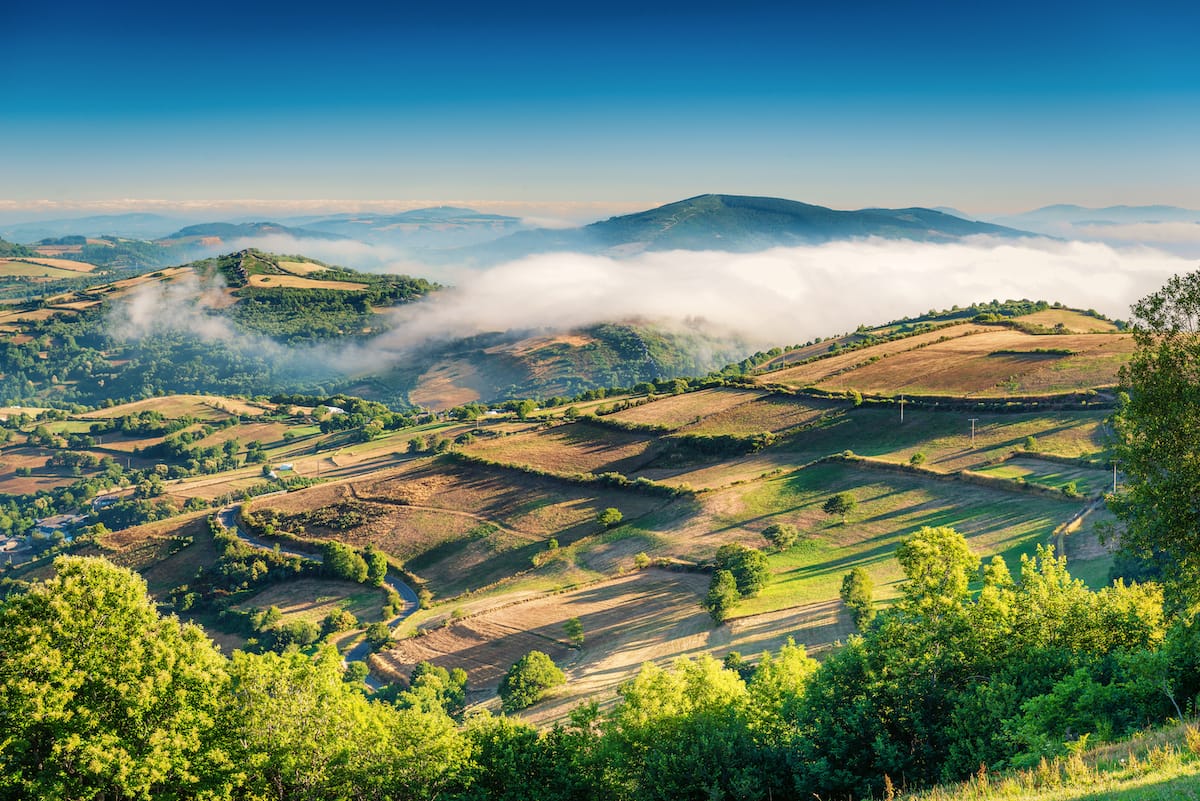
The Northern Coast is a great place for outdoor and watersports lovers with plenty of great surfing, kitesurfing, and diving spots.
The region has many hiking and walking trails including several Camino de Santiago pilgrimage routes.
The inland part of the region boasts fantastic cultural heritage sites. Food is another reason why many people come here.
The Basque Country is a world-renown food destination. Local cuisine is an amazing combination of fresh seafood and fish, quality meat, local seasonal vegetables, and great wines.
This suggested 2-week road trip itinerary for Northern Spain offers a perfect combination of a beach holiday, adventure activities, and food and cultural experience.
This Itinerary for Northern Spain
Below, you’ll find a well-curated itinerary that details how to spend each and every day of your two-week journey through Spain’s north. To see a quick recap of what will be covered, you can see an overview of the Northern Spain itinerary below:
- Days 1-3: San Sebastian
- Day 4: Bilbao
- Days 5-6: Santander
- Day 7: Gijon
- Days 8-9: Leon
- Day 10: Lugo
- Day 11: Santiago de Compostela
- Day 12: Finisterre
- Days 13-14: A Coruna
Each day is broken down with information and relevant tours. If there is anything you’d like to know that is not covered, please leave a comment and we will try to reply as soon as possible!
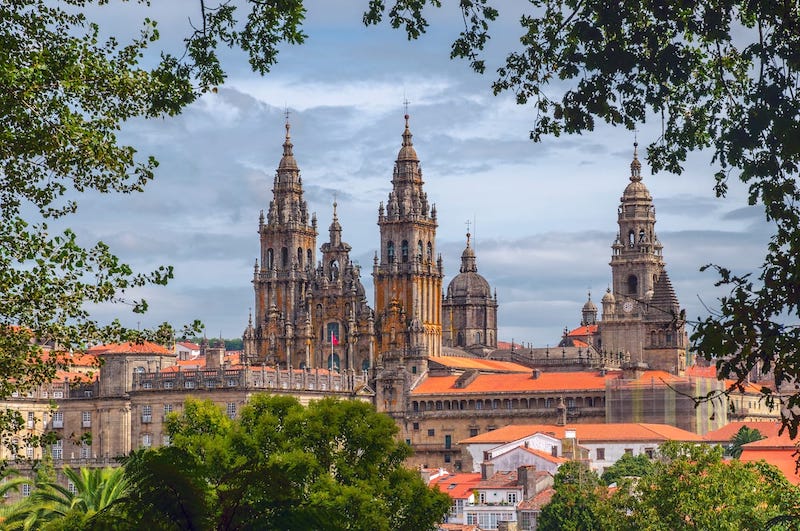
Week 1: Basque Country, Cantabria, and Asturias
Days 1-3: San Sebastian
San Sebastian or Donostia (what it’s called in the Basque Country) is one of the most beautiful cities in the country and easily one of the best Spain weekend breaks!
The city has a lot to offer from perfect sandy beaches, clear waters of the Atlantic Ocean, lush green hills, elegant architecture, and delicious food.
Day 1: Exploring San Sebastian on Foot
The historical center (La Parte Vieja) is a great area of the city to explore on foot. There are many historical monuments, museums, and churches to see here. You can explore the city on your own or join a walking tour to learn more about San Sebastian and its history.
Book your San Sebastian walking tour: Lonely Planet’s San Sebastian Local Guided Tour
The highlights of San Sebastian:
- Plaza de la Constitución
- Plaza de Gipuzkoa
- Buen Pastor Cathedral
- San Vicente Church
- Town Hall
- Alderdi Eder Gardens
- San Telmo Museum
- Boulevard Avenue
After exploring the historical part of the city, go up to the top of one of the hills to get the best views of San Sebastian. Mount Urgull and Mount Igueldo are the most popular look-out points in the city.
If you enjoy hiking, you can explore the coastline following one of the walking trails, for example, a footpath from Zurriola Beach to the top of Mount Ulia.
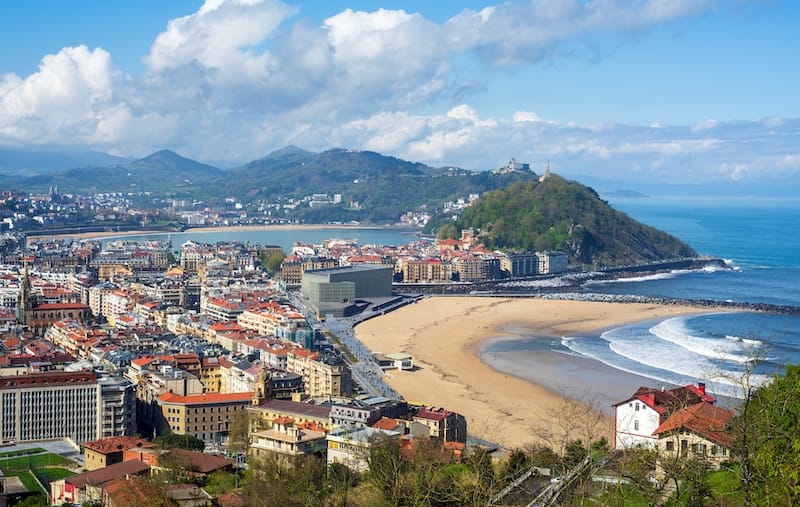
It goes along the coast to Pasaia, a small town 9 kilometers from San Sebastian. The trail is part of the Camino del Norte route from Irun to Santiago de Compostela. There are several great viewpoints along the route, e.g. Batería de Monpás, Mirador de Kutraia.
In the evening, going out is a must in San Sebastian- especially on Friday and Saturday nights. In summer, every night is like a weekend there.
There are hundreds of great bars and restaurants in the city, including 18 Michelin Star restaurants. Make sure you do it Spanish style!
Don’t go to one bar and spend there the entire evening, it’s not how it’s done here. Instead, visit a couple of places, drink a beer or a glass of wine at one, eat a pintxo (local version of a Spanish tapa), and move on to the next bar.
A pintxo in the Basque Country is not just a snack that comes with your drink, it’s a piece of art. Looking at a variety of pintxos at some bars it’s difficult to decide which one to choose.
Day 2. Relaxing on the Beach
There are a couple of great sandy beaches in San Sebastian with beach chairs and umbrellas where one can relax and enjoy the nice weather and a refreshing swim.
The three main city beaches are La Concha, Zurriola, and Ondareta. La Concha and Zurriola are more popular beaches close to the city center. Zurriola is located a bit away from the bustling center and there are usually fewer people there.
All three beaches are sandy, nice for swimming, and have good infrastructure with showers, toilets, beach chairs, lifeguards, etc.
If you prefer being active and spending a day chilling on the beach is not something you’d enjoy you, can rent a surfboard at one of the city beaches or take surf lessons.
La Concha and Ondarreta beaches are good places for learning while Zurriola is a better spot for those who can already surf. Renting a kayak or a paddleboard is another great way to enjoy a nice day in San Sebastian.
Book your San Sebastian surf adventure with one of these trips/lessons:
- Surf excursion at Zurriola Beach (beginner)
- Private surfing lessons at Zurriola Beach (beginner)
- Group surfing lessons at Zurriola Beach (beginner)
Don’t miss the beautiful sunset! You can watch it from any beach, but for the best views, go up one of the city hills- Mount Urgull or Mount Igueldo.
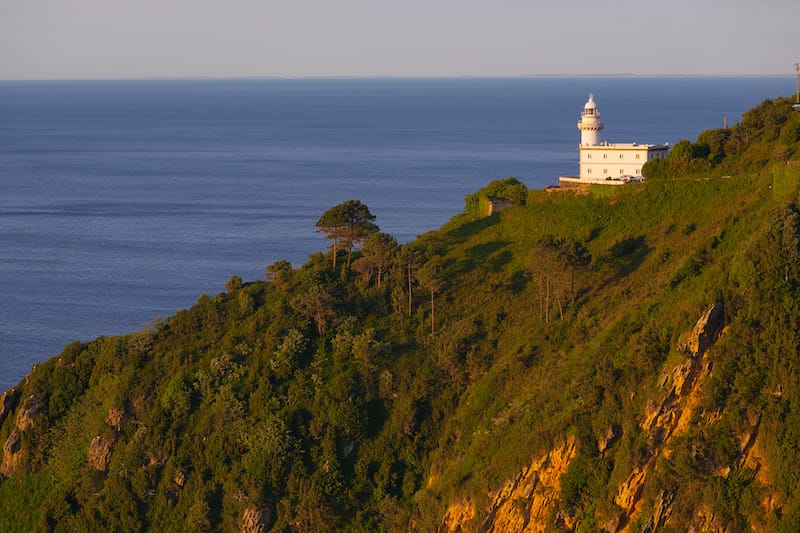
For an amazing romantic experience, take a sunset yacht cruise from La Concha Beach. It is one of the best things to do in San Sebastian!
Book your sunset yacht cruise: San Sebastian sunset yacht cruise
Day 3: A Day Trip to Biarritz, France
- Distance – 120 kilometers from San Sebastian to Biarritz (return trip)
- Stops on the route – Pasaia, Hendaye, the Basque Corniche, Saint-Jean-de-Luz, Biarritz
A day trip from San Sebastian to Biarritz in France is truly rewarding. The drive along the beautiful, rugged coast past charming towns, unspoiled beaches, and breathtaking look-outs is a great way to spend a day.
There are several fantastic spots and charming seaside towns along the route and some of them deserve at least a quick stop.
Hendaye, a small French town just across the border boasts amazing long beaches and the beautiful Château d’Abbadie.
Saint-Jean-de-Luz is a charming town with a picturesque harbor and waterfront. There are several breathtaking lookout points along the coast.
Corniche d’Urrugne and the Basque Corniche are the two not-to-miss sights there.
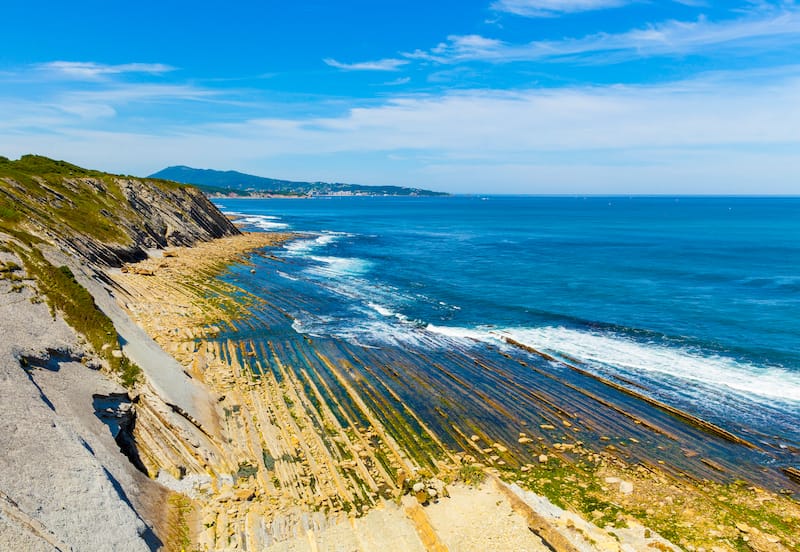
At the end of the 19th century, Biarritz was one of the royalty’s favorite places in Europe. European kings and queens, aristocrats, rich people, actors, and artists from Europe used to spend their summer holiday there.
In the middle of the 20th century, Biarritz got a new status as a European surf capital. It’s recognized as the first place in Europe where surfing was practiced. Nowadays Biarritz is still a popular resort place with many posh hotels and villas and is one of the best places to visit in South France.
Book your guided walking tour of Biarritz: Discover Biarritz guided walking tour
The highlights of Biarritz:
- Rocher de la Vierge – a rock formation in the sea with the statute of the Virgin Mary connected by the bridge with the mainland
- Phare de Biarritz – an old lighthouse on the cliff
- La Grande Plage – the most popular city beach
- Les Halles de Biarritz – a market with a great variety of fresh fruit, vegetables, and other local products.
Day 4: Bilbao
- Distance – 130 kilometers from San Sebastian to Bilbao
- Stops on the route – Zarautz, Getaria, Zumaia, Ondarroa, Guernica, Bilbao
It’s time to leave beautiful San Sebastian and continue exploring the coast of the Basque Country.
The first half of the route is next to the sea, passing many charming beach towns. Zarautz, a small surf town with a long sea promenade. Getaria, a tiny place with a picturesque old town and a beautiful sandy beach. Guernica, a famous town from Picasso’s painting.
In 1937, during the Spanish Civil War, Guernica was completely destroyed after the 3-hour continuous bombing by the Nazi Luftwaffe and the Italian Aviazione Legionaria.
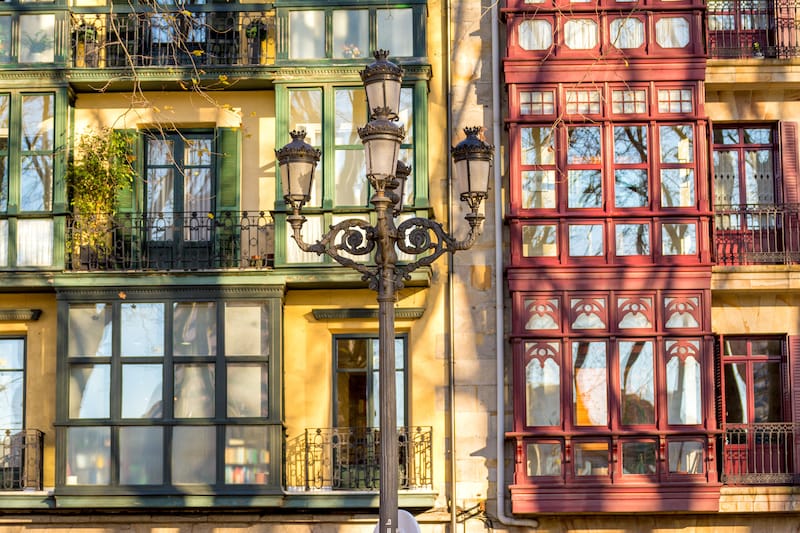
Bilbao is a great city to stop for a day. The tourist attractions of Bilbao can be divided into two groups- the Old Town (Casco Viejo) and the modern part.
The Casco Viejo with its cobbled narrow streets, old buildings, churches, and small bars is better to explore on foot.
The highlights of the Casco Viejo:
- The Catedral de Santiago
- Plaza Nueva – a typical Spanish square
- Mercado de la Ribera – an old food market
- Teatro Arriaga
- Church of Saint Anthony the Great
- Edificio de la Bolsa – the old stock market building
The modern part of the city boasts one of the most iconic modern buildings in the world, the Guggenheim Museum.
The Museum was inaugurated in 1997 and the opening the museum had a huge impact on the city. It caused the so-called Guggenheim effect, converting Bilbao into one of the most modern cities in Spain.
Book one of these Guggenheim Museum tours or ticket experiences:
- Guggenheim Museum private guided visit
- Skip-the-Line Guggenheim Museum ticket with a guided tour
- Magic at the Guggenheim Museum tour
- Guided tour of the Guggenheim (in Spanish)
Even if you’re not a big fan of contemporary art, having a look at the Guggenheim is one of the best things to do in Bilbao. The building itself is an art object!
The highlights of the modern part of the city:
- The Guggenheim Museum
- Puente de la Salve – a modern bridge over the Nervión River
- Paseo de la Memoria – a riverside park
- Palacio Euskalduna – a modern philharmonic hall
- Museo Marítimo Ría de Bilbao
You can do a boat tour through the city that will take you past the Casco Viejo and the modern part of Bilbao. This is highly recommended since you’ll have such a short amount of time to visit Bilbao.
Book your Bilboa boat trip: Bilbao 1 or 2 hour boat sightseeing tour of the city
Bilbao, like San Sebastian, has many great pintxo bars and restaurants in the Casco Viejo. Don’t miss the opportunity to eat delicious pintxos here.
If you fancy staying in Bilbao overnight, check out our Airbnb Bilbao guide to ten amazing properties all within walking distance of the Guggenheim!
Days 5-6: Santander
Day 5: Scenic Drive Along the Cantabrian Coast
- Distance – 120 kilometers from Bilbao to Santander
- Stops on the route – Portugalete, Castro Urdiales, Laredo, Santander
You’ll have an amazing day of driving along the coast with a couple of beautiful towns, stunning lookout points, and unspoiled beaches.
Portugalete, a nice town just outside Bilbao, is a great place to stop for breakfast. There are many cafes with outside terraces overlooking the river.
The main attraction in Portugalete is the Vizcaya Bridge, a transporter bridge over the Nervion River. The bridge is a unique construction of its kind and the only industrial monument in Spain that was declared a World Heritage Site by UNESCO.
The structure is 45 meters high and 160 meters long.
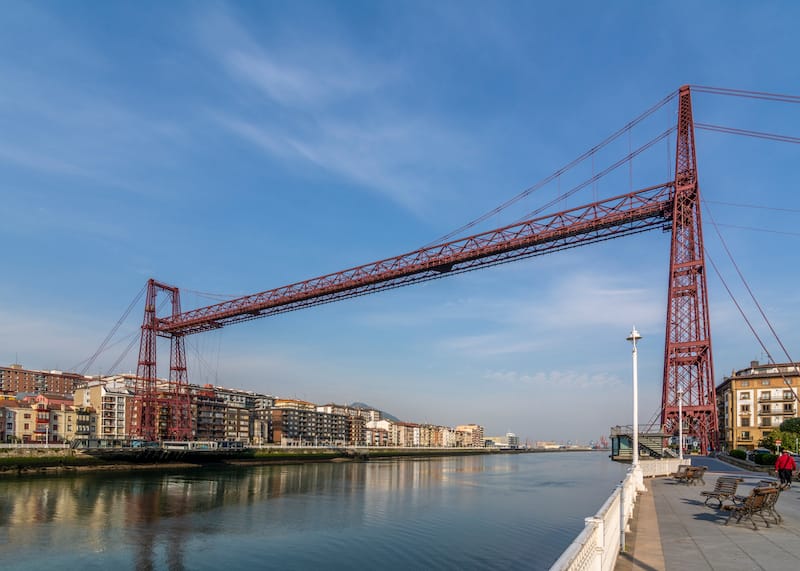
Portugalete is the last stop in the Basque Country- soon after the town, the route crosses into Cantabria.
The next stop is Castro Urdiales, a small port town with a picturesque harbor, the beautiful church of Santa Maria de la Asuncion, and a long promenade.
Laredo is another nice beach town with a small historical center, many restaurants, and cafes. It is the perfect place to stop for lunch. Laredo has two long sandy beaches that are nice for swimming.
Santander, the capital city of the Cantabria region makes a perfect 2-day stop on the route.
Day 6: Discovering Santander
Spend the morning strolling through the city center and walking along the promenade. There are many interesting historical monuments, green spaces, and beautiful modern buildings in the city.
Santander is a nice city for walking or cycling. There are several bike rental services in the center. On a nice summer’s day, a boat cruise is a great way to see the city!
Book your Santander boat cruise: 1 hour boat cruise around the bay at Santander
The highlights of Santander:
- The Cathedral of Santander
- The Lighthouse of Cabo Mayor
- Centro Botin – a modern art museum
- Mercado de la Esperanza – a seafood and fish market
- Palacio de Festivales de Cantabria – a modern convention center
- Palacio de la Magdalena
- Magdalena Beach
- Bikini Beach
- Dock of the Caravels – an open-air museum
- Parque de la Vaguada de las Llamas – one of the largest parks in Spain
The rest of the day you can spend relaxing on the beach, swimming, surfing, or hiking along the cliffs following one of the footpaths on Cabo Menor.
Santander is a great city for going out, dining, and partying. There are hundreds of bars, restaurants, and clubs in the city center.
Day 7: Gijón
- Distance – 180 kilometers from Santander to Gijón
- Stops on the route – Santillana del Mar, Comillas, San Vicente de la Barquera, Llanes, Gijón
The day will start with many interesting towns and places to stop along the route. Santillana del Mar is the one not to miss here!
It is a very small, charming town with an old Romanesque monastery, narrow cobblestone streets, and small houses decorated with flowers.
The town is a gateway to one of the most important archeological sites in Europe, the Cave of Altamira.
The cave is renowned for its prehistoric art, charcoal drawings of animals and humans. The earliest paintings of Altamira were made around 36,000 years ago.
Unfortunately, the cave is closed for visitors to preserve the paintings. There is a replica cave and museum that reproduces the original cave in detail that can be visited with a tour.
Santillana del Mar is the last stop in Cantabria before crossing to Asturias, a mountainous region of Spain with a beautiful coastline.
There are a couple of pretty beach towns along the way where you can stop for coffee, lunch, and sightseeing. Comillas is one of the most interesting towns on the route.
A lovely coastal town with a beautiful historical center. Despite its small size, the town has several remarkable buildings.

El Capricho de Gaudí, an eccentric mansion designed by the famous Catalan architect, is one of the most famous here.
Among other interesting buildings are the Comillas Pontifical University, Sobrellano Palace, Church of San Cristóbal, and the Palace of the Dukes of Almodóvar.
Gijón is a seaside city with a couple of beautiful beaches and a charming historical center. It’s a nice place to stop for a day, wander through the Old Town, relax with a glass of wine at the Plaza Mayor, and spend some time on the beach.
Book your Gijon sightseeing tour: Best of Gijon hop-on, hop-off bus tour
The highlights of Gijón:
- Cerro Santa Catalina- a small hilly cape famous for its fort and the modern sculpture Elogio del Horizonte
- Revillagigedo Palace
- Basílica-Santuario del Sagrado Corazón de Jesús
- Plaza Mayor
- Aquarium of Gijón
- Playa del Poniente
- Playa San Lorenzo
Week 2: Castille and León and Galicia
Days 8-9: León
Day 8: Driving inland
- Distance – 156 kilometers from Gijón to León
- Stops on the route – Oviedo, Embalse Barrios de Luna, León
Today, from the green Asturias, the route continues through the arid Castille and León. The region doesn’t possess the natural beauty of the coast but it offers a great cultural experience.
Oviedo is the last stop in Asturias. The capital city of the region is known for its beautiful medieval old town with the impressive Gothic Cathedral and the 9th century Church of Santa Maria de Naranco.
From Oviedo, the road goes over the mountains, through the forest, past a couple of lakes and dams with no big cities or towns till León.
Day 9: Exploring León
The city of León has a long history that goes back to the time when Northern Spain was part of the Roman Empire.
The first settlement was a Roman military camp around 29BC. By 74AD, the original camp grew into a town. The Middle Ages was the brightest period in city history. In 910, León became the capital of the Kingdom of León.
The city is considered to be the cradle of Parliamentarism. In 1188, during the reign of Alfonso IX, León hosted the first Parliament in European history.

Santa María de León Cathedral is an attraction not to miss in the city. The Cathedral is often called The House of Light. It’s a masterpiece of the Gothic style architecture of the 13th century.
The exterior of the Cathedral is impressive but it’s the interior that leaves you astonished. The Cathedral has over 1800 square meters of stained glass windows, most of them are original from the 13-14th centuries.
León, like many other historical cities and towns in this part of Spain, has been an important stop on the pilgrimage route to Santiago de Compostela for centuries.
Other attractions to visit in León:
- The Medieval Walls of León
- Palacio De Los Guzmanes
- Plaza Mayor
- Plaza del Grano
- Church of Nuestra Señora del Mercado
- Arco de la Cárcel
- Museo de San Isidoro
- Palacio de Don Gutierre
Barrio Húmedo, in the historical center of León, is famous as the best area to go out for a drink or dinner. On the weekends, the night streets of the Barrio are alive and full of people.
Day 10: Lugo
- Distance – 225 kilometers from León to Lugo
- Stops on the route – Astorga, Ponferrada, O Cebreiro, Lugo
There are several nice towns and villages to stop along the route. Astorga is a small town with the beautiful Plaza Mayor, the Cathedral of St.Maria, and the Palace of Gaudi.
Ponferrada is another remarkable town with the castle, a couple of squares and bridges, and the Cathedral. Both make a great coffee or lunch stop on the way.
If you have time, drive up to O Cebreiro, a tiny and adorable village on the top of the mountain. It’s the first stop in the Galicia province, one of the greenest areas in Spain.
Galicia, like the Basque Country, has its own language and a deep connection to the sea. The scenery here reminds visitors more of Scotland than Spain.
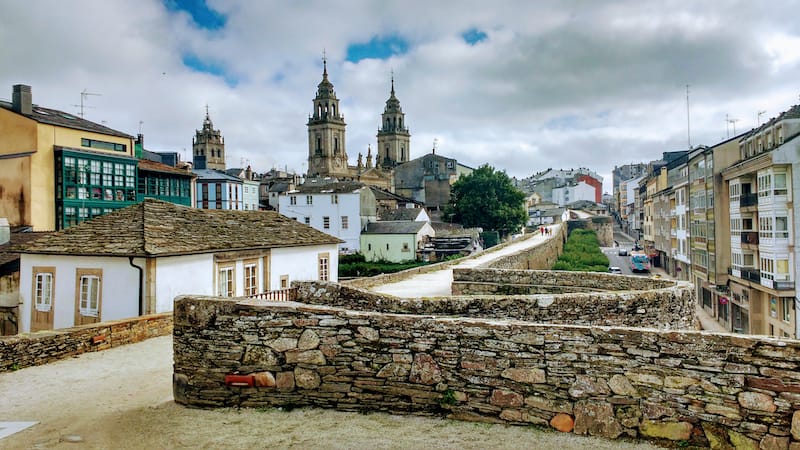
Lugo is a wonderful city with an impressive historical center surrounded by Roman walls. It’s the only city in the world surrounded by completely intact Roman walls.
Most of the walls and towers were built back in the 3rd century. Every year, Lugo hosts Arde Lucus, a festival celebrated in June which revives the Roman history of the city. Thousands of people from all over Europe come here to take part in the festivities.
You can spend an afternoon in Lugo wandering along the cobblestone streets of the Old Town, visiting a couple of historical sites, walking on the walls, doing souvenir shopping, and enjoying delicious local pastries.
Not to miss in Lugo:
- The Cathedral of Lugo
- Church of St. Francis
- The Roman Bridge
- Domus Mitreo – an archeological site with the ruins of a Roman temple
- The City Hall
- Church of St. Dominic
Day 11: Santiago de Compostela
- Distance – 100 kilometers from Lugo to Santiago de Compostela
Santiago is one of the most important pilgrimage places in Europe. Thousands of pilgrims arrive here every year following different Camino de Santiago routes across Europe.
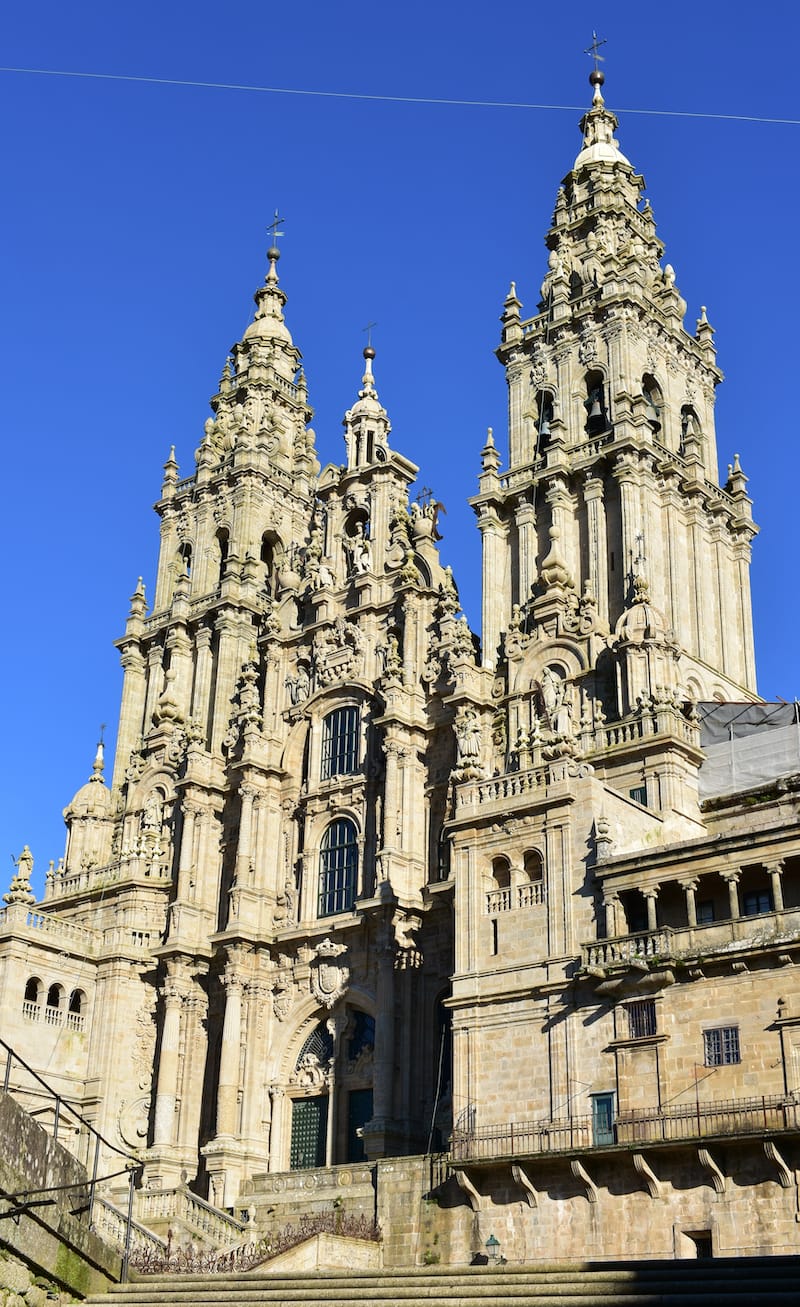
The Cathedral of Santiago on the Plaza do Obradoiro is the end of the pilgrimage. The Cathedral contains the tomb of Apostle St. James whose body was transferred from Palestine to Spain in 44AD.
It’s one of the three Cathedrals in the world built over the tomb of an apostle. You can visit the Cathedral on your own or join a tour and learn more about its history.
Book your Santiago de Compostela tour: Santiago de Compostela Cathedral and guided museum tour
Places to see in Santiago de Compostela:
- The Cathedral de Santiago
- Plaza Obradoiro
- Seminario Menor
- Seminario Mayor
- The Church of Santa Maria
- Pazo de Raxoi, the City Hall
- Alameda Parque
- Convent of San Francisco de Santiago
The pilgrimage is not the only reason to visit Santiago de Compostela. The city has plenty of things to do from visiting museums, walking through the streets of the historical center, enjoying the tranquility of the parks, relaxing with a glass of wine at one of the charming street cafes, and of course, trying delicious local tapas.
Friday is the day to be in Santiago. From 8pm, the narrow streets of the Old Town start filling with people since both locals and tourists come here for a drink at small tapas bars.
Some of them are so popular that you have to wait in a queue to get in and order a drink. Tapas are a must-try there!
The variety of fresh seafood, vegetables, cold meats, and cheeses is quite impressive. Rúa do Franco and Rúa da Raíña are the best bar streets in Santiago. Trafalgar Bar and Taberna o Gato Negro are one of the most popular local bars in the area.
Day 12: Finisterre
- Distance – 85 kilometers from Santiago to Finisterre
Finisterre, often referred to as the end of the world, is a cape in the Atlantic Ocean. In Roman times, people believed it was the end of the known world.
The cape and the surrounding area are truly spectacular with wide sandy beaches, endless ocean, rugged cliffs, lush green forest, and small fishermen’s villages.
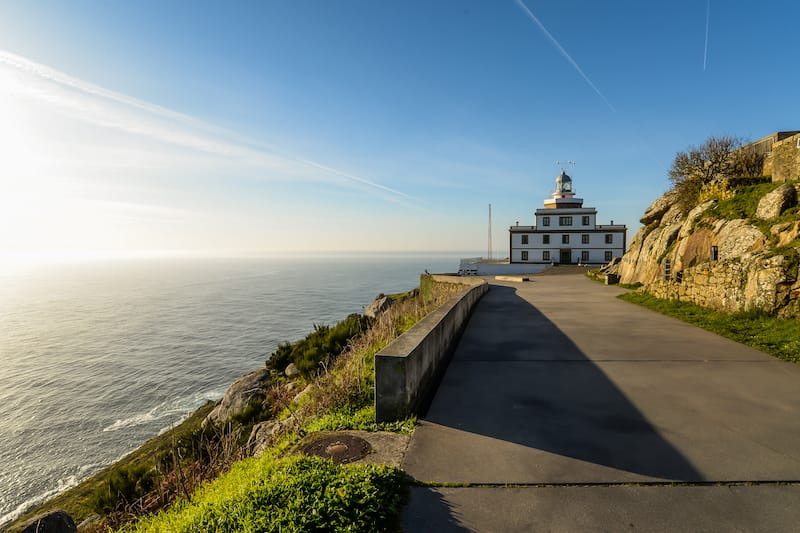
Cape Finisterre, a dramatic cliff with an old lighthouse, is the tourists’ favorite attraction here. It’s also known as the end of the Camino Finisterre, a pilgrimage route to the end of the world.
There are several walking trails, beautiful waterfalls, and unspoiled beaches that you can visit from Finisterre.
Days 13-14: A Coruña
Day 13: Driving along the Galician Coast
- Distance – 130 kilometers from Finisterre to A Coruña
- Stops on the route – Muxía, Laxe, Malpica, A Coruña
The Galician wild coast is a great place for a road trip. Driving from Finisterre along the coast, you can see the most beautiful parts of the region.
There are many lighthouses, small villages, and lookout points along the way. Cape Muxía is the one not to miss here. It is a picturesque cape just 40 kilometers from Finisterre with a church and a small lighthouse.
Camariñas, Lighthouse of Cabo Vilan, Praia dos Cristais (Crystal Beach), Roncudo Lighthouse, and Malpica are just a few stunning places to stop on the way.
Day 14: Exploring A Coruña
A Coruña is a spectacular city on the coast of the Atlantic Ocean. The Old Town of A Coruña occupies a small picturesque peninsula with dramatic rocky cliffs, sandy beaches, and a 9-kilometer long sea promenade.
The city is a perfect place to spend the last day of your road trip along the northern coast of Spain.
The highlights of A Coruña:
- Tower of Hercules
- Maria Pita Square
- The Church of Santiago
- The Church of San Xurxo
- Rosa dos Ventos- a look-out point
- Campo da Rata- a historical monument
- The Aquarium
- Raizor Beach
- Orzan Beach
- Méndez Nuñes Garden
Joining a guided walking tour through the Old and New Town is a great way to explore the city.
Book your A Coruna walking tour: A Coruna guided walking tour of the new and old city
The historical part of A Coruña has many bars and restaurants with amazing Galician cuisine.
Must-try seafood dishes:
- Pulpo A la Feira- a cooked octopus served with olive oil and species
- Deep-fried squid rings
- Grilled lobsters & crabs
- Shellfish
- Percebes or goose barnacles
About the Authors
Campbell & Alya are an adventurous couple behind Stingy Nomads. Passionate walkers and outdoor lovers, in the last 2 years they’ve spent months walking across Spain and Portugal following different routes of the Camino de Santiago.
More Spain Travel Guides
- Madrid in winter
- Places to visit in Lanzarote
- Barcelona in winter
- Things to do in Zaragoza
- Airbnbs in Zaragoza
- Best weekend getaways in Spain
Pin this North Spain Itinerary for Later!
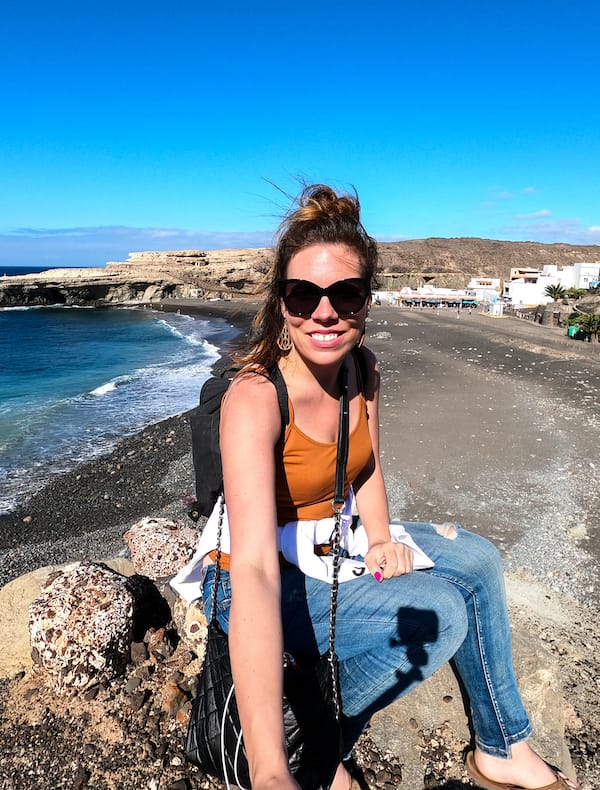
Megan is a travel blogger and writer with a background in digital marketing. Originally from Richmond, VA, she now splits her time between Frankfurt, Germany and Arctic Finland after also living in Norway, Armenia, and Kazakhstan. She has a passion for winter travel, as well as the Nordic countries, but you can also find her eating her way through Italy, perusing perfume stores in Paris, or taking road trips through the USA. Megan has written for or been featured by National Geographic, Forbes, Lonely Planet, the New York Times, and more. She co-authored Fodor’s Travel ‘Essential Norway’ and has visited 45 US states and 100+ countries.

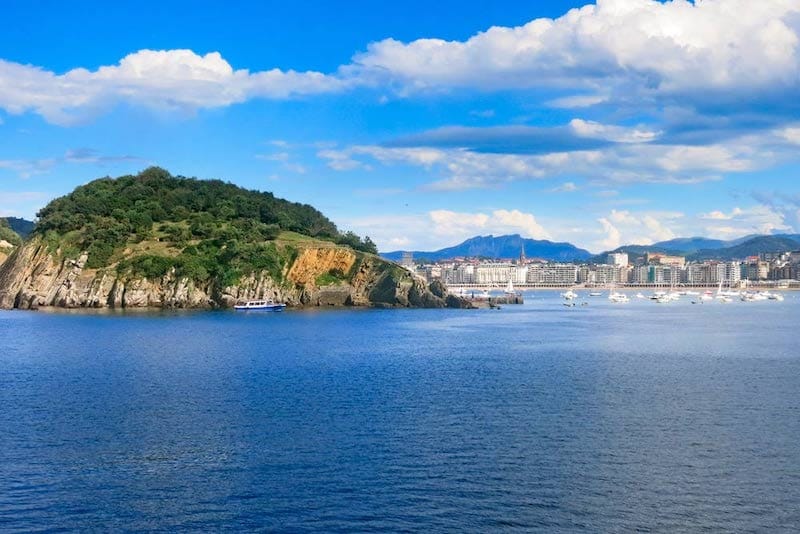
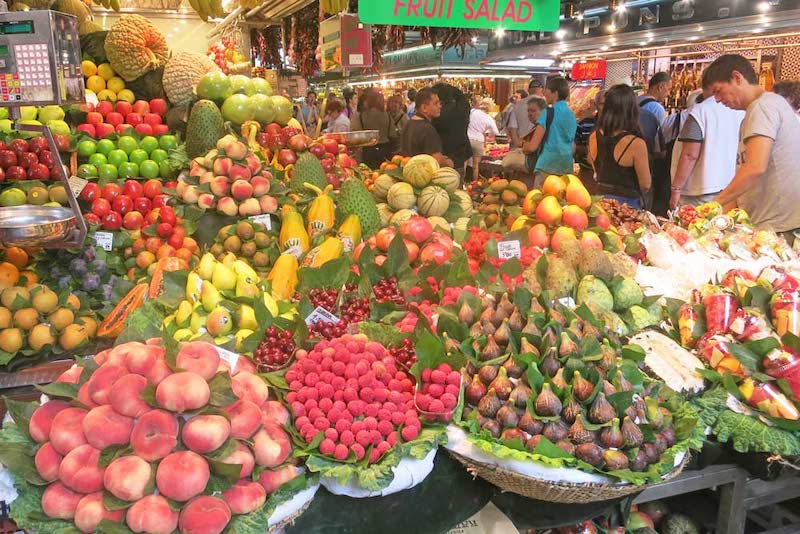
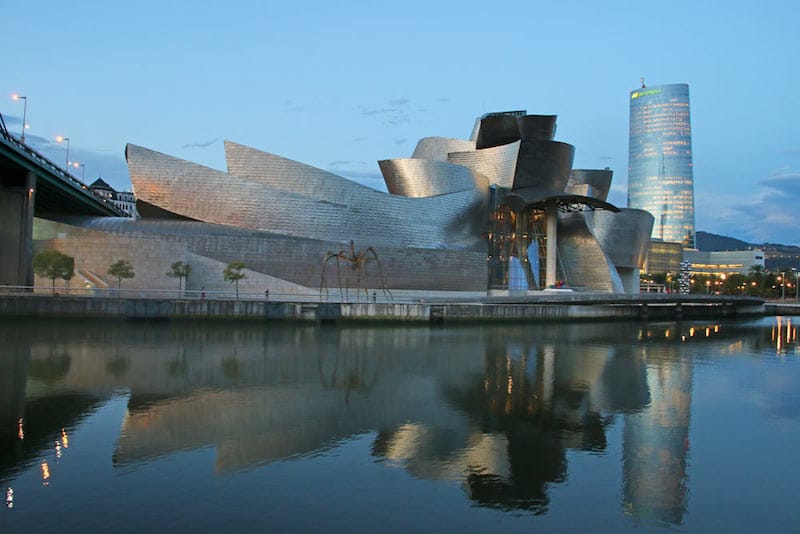
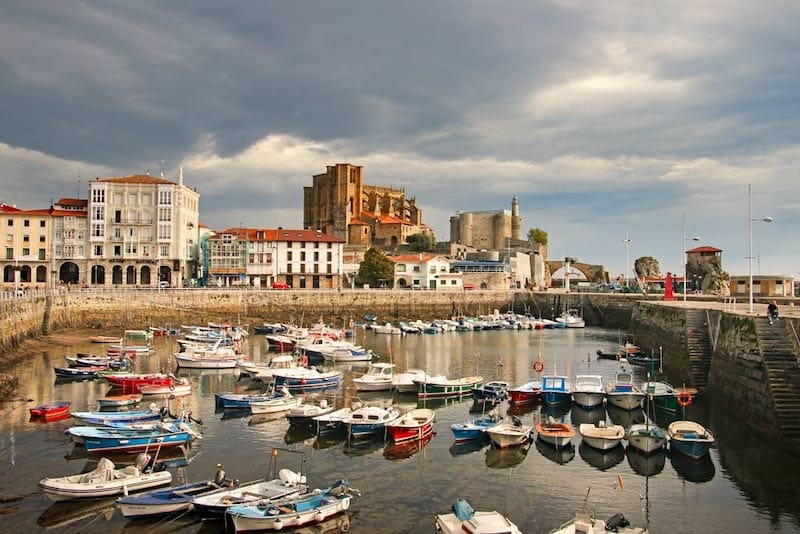
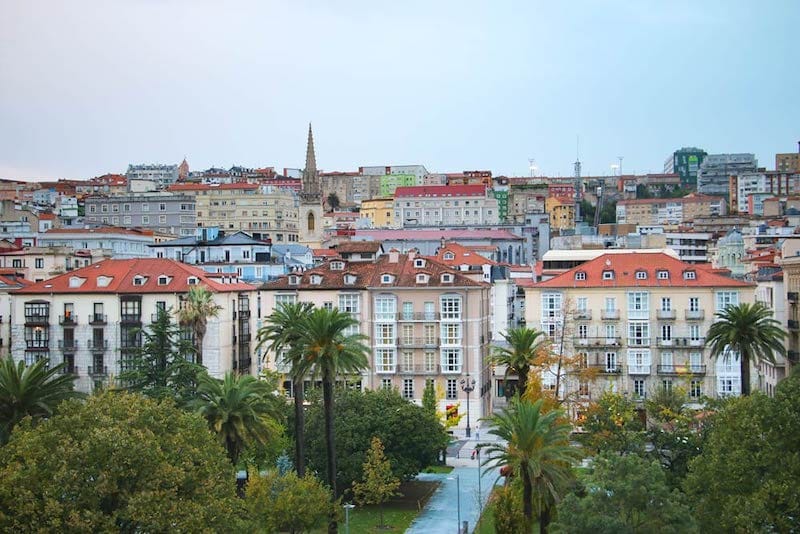
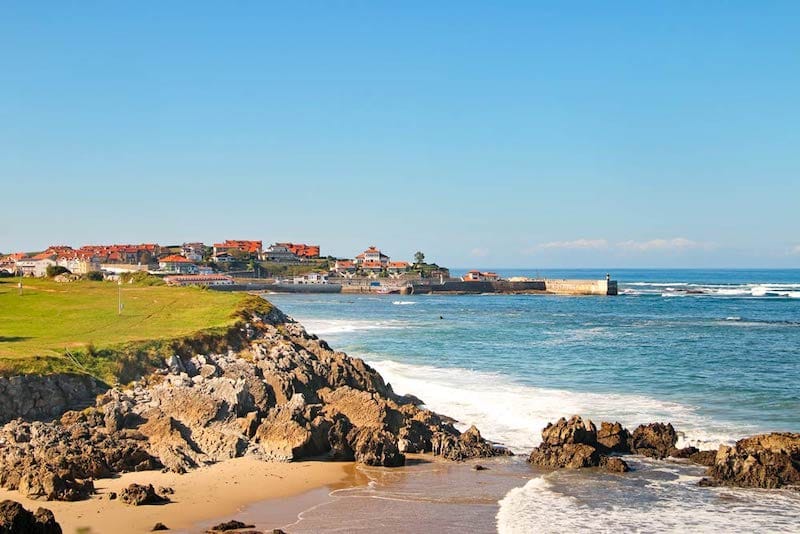
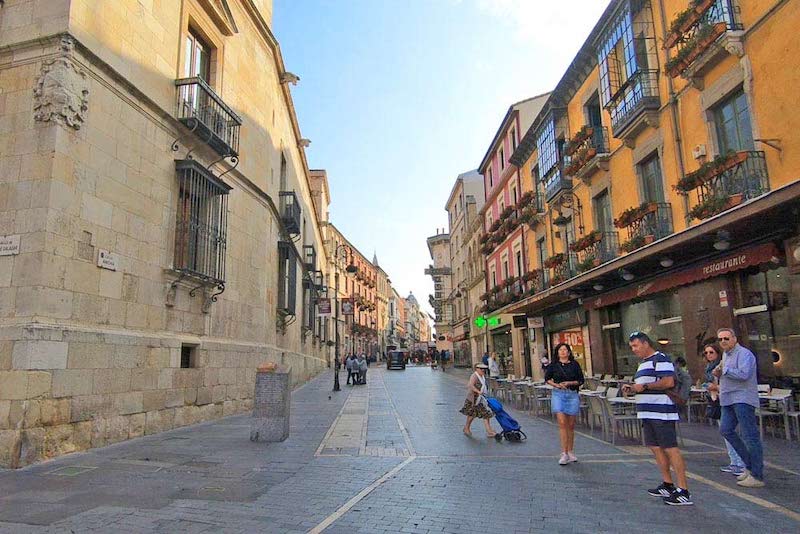
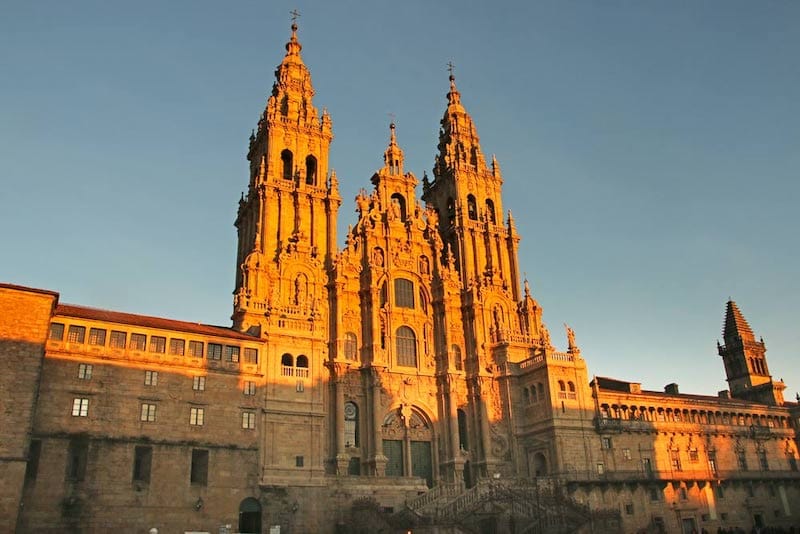
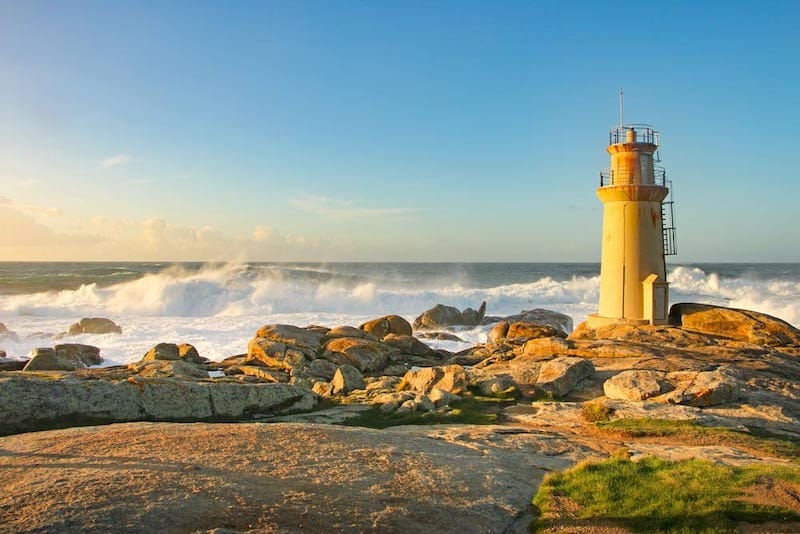
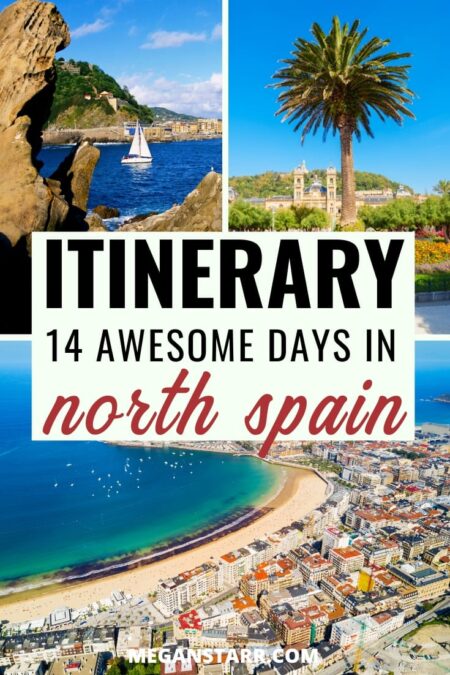
Overrated, boring list of all the usual places recommended in all travel books… I lived in the north of spain for 5 years and can make a much better list of places worth seeing that are different, filled with original charm and not tourist traps!
please provide a list, would love to see your recommendations
ok Melissa,
so where’s your list? these guys put a lot of effort into this and all you can say I could to better ….. but you cant.
May I suggest you try to be a kinder person
Thanks for this wonderful information. This one is for sure on my bucketlist! I walked the Francés in 2016 and the Inglés in 2019 and be priviledge to walk through some of this places like Leon.